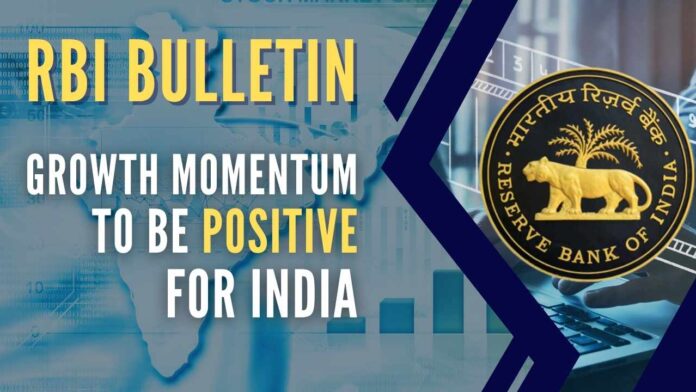
See an upturn in the Capex cycle, growth momentum to pick up
“The near-term growth outlook for the Indian economy is supported by domestic drivers as reflected in trends in high-frequency indicators,” the RBI said in its bulletin for December 2022, in the chapter on the state of the economy.
It noted that the equity markets touched a string of new highs during November, buoyed by strong portfolio flows to India. Headline inflation moderated by 90 basis points to 5.9 percent in November driven by a fall in vegetable prices even as core inflation remained steady at 6 percent.
Global inflation may have peaked but the balance of risks is increasingly tilted towards a “darkening” global outlook and emerging market economies (EMEs) appear to be more vulnerable, it said.
“Waning input cost pressures, still buoyant corporate sales, and turn-up in investments in fixed assets are heralding the beginning of an upturn in the Capex cycle in India, which will contribute to a speeding up of growth momentum in the Indian economy,” the bulletin said.
“The finances of the Central government, as well as the states, improved significantly in the first half of 2022-23 with receding negative spillover effects induced by the pandemic, even as the war in Europe has led to targeted fiscal measures,” the bulletin said.
On the government’s finances, the bulletin said that the Centre had recorded robust tax collections, both direct taxes and GST, reflecting sustained recovery of the economy, improved tax governance, and administration as well as a healthier balance sheet of the corporate sector.
“India’s core digital economy (hardware, software publishing, web publishing, telecommunication services, and specialized and support services) increased from 5.4 percent of Gross Value Addition in 2014 to 8.5 percent in 2019,” it noted.
Focussing on the digital rise, the RBI bulletin said that India’s digital economy grew 2.4 times faster than the Indian economy, with strong forward linkages to the non-digital sectors.
The digital output multiplier has increased over time, highlighting the role of digital economy investments to drive growth.
The employment estimates show that 4.9 million people were employed in the core digital sector. Considering the total digitally dependent economy, around 62.4 million workers are employed in digitally disrupted sectors, the bulletin said.
[With Inputs from IANS]
PGurus is now on Telegram. Click here to join our channel and stay updated with all the latest news and views
For all the latest updates, download PGurus App.
- Centre appoints Sr IPS officer Nalin Prabhat as NSG Chief, IPS Sapna Tewari to take over as Special Director IB - April 19, 2024
- Annamalai casts vote; says will register historic win, people of TN with PM Modi - April 19, 2024
- Oil prices surge as reports of Israeli strike on Iran roil markets - April 19, 2024











Work silently. Do not get blown by West funded windmills